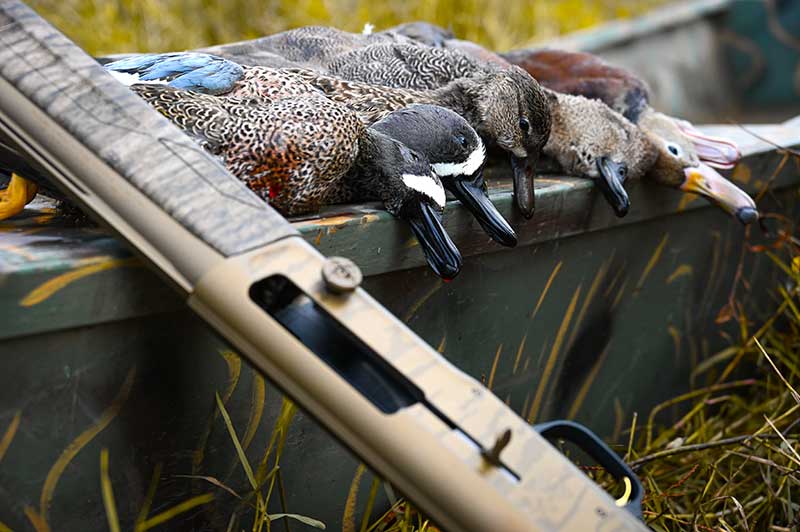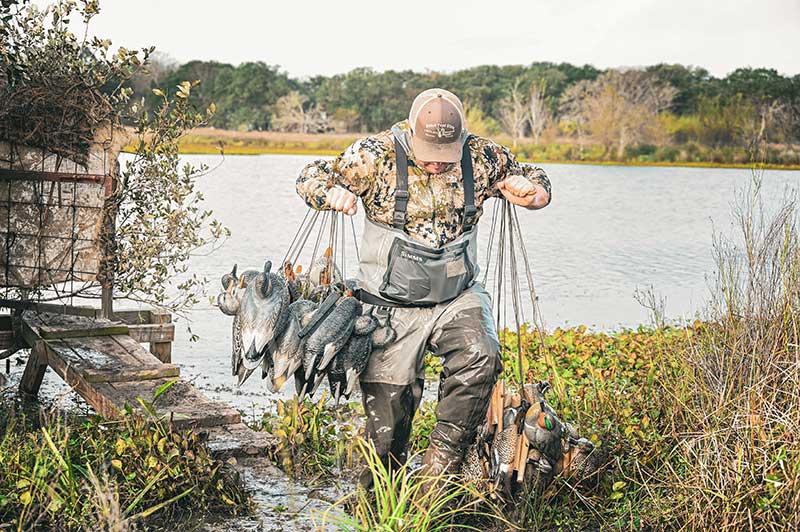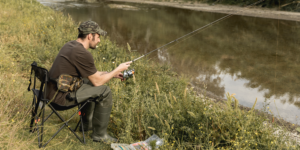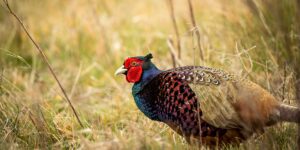Hunting waterfowl is a pastime that spans generations. Here’s all you need to know to hit the marshes this winter.
Migrating waterfowl have offered a sporty pastime for generations of hunters. From flooded timber, to marshes, to lakes and oceans, hunters brave the cold each season for a chance at numerous duck species. Read on for your know-how into the sport of duck hunting.
Why limit yourself to public land when there are millions of acres of private land to explore.
Best Habitat for Duck Hunting
Ducks aren’t referred to as “waterfowl” for nothing—they prefer places with water like wetlands, marshes, ponds, rivers, and lakes, while sea ducks prefer oceans. Ducks are a migrating bird and travel the four different flyways from Alaska and Canada to Mexico and South America each year to breed. They chase the warmth for thousands of miles to locate non-frozen water so they can nest.
Ducks tend to prefer shallow water. Underneath that shallow water is where a lot of their feed comes from, making depths of 6 to 18 inches of water ideal for landing, swimming, and feeding. Ducks feed on a variety of food including corn, milo, wheat, millet, other grains, and native plant species.
Most Popular Types of Ducks for Hunting
Waterfowl come in all shapes in sizes, and vary region to region. The most popular ducks and common household names you may recognize are mallard, wood duck, teal, northern pintail, gadwall, canvasback, wigeon, and common eider.
The mallard is the most commonly recognized species of duck thanks to the drake’s (a male duck) famous green head. The elegant northern pintail is a tough species to hunt because they are hard to decoy, while the canvasback is equally as treasured with their russet-colored head. Teal offer hunters a sporty day afield—they are little pocket rockets in the sky, while the wood duck is colorful and one of the most beautiful ducks you’ll lay eyes on. The common eider is an iconic species to hunt on the east coast. Hunters will find themselves hunting rocky seascapes for a chance at this unique ocean duck.

Duck Hunting Regulations and Restrictions
In the 1930s, duck hunting almost disappeared from Canada and the U.S. due in part to commercial duck hunting and native habitats disappearing from farming and environmental conditions. Thanks to conservation organizations like Ducks Unlimited, waterfowl populations rebounded after a concentrated effort to save, preserve, and make new wetlands across North America. Because of this, duck hunting rules and regulations were put in place to ensure the growth of ducks for future generations.
You must purchase a hunting license to hunt waterfowl. Additionally, if you plan on hunting migratory waterfowl and are 16 years of age or older, you must purchase a Federal Duck Stamp. Literally a postage stamp, the Federal Duck Stamp is one of the most successful conservation tools ever created. The stamp is a conservation revenue stamp and 98 percent of the purchase goes directly to acquire and protect wetland habitat. You must have the stamp with you at all times while hunting, and it has to be signed in ink across the face of the stamp.
There are hunting seasons specific to your state and sometimes specific to species. It’s important to know before you go by checking your state’s Division of Wildlife website. There are also possession limits for each duck species. It’s important to be able to identify ducks while they are flying because once you have reached your possession limit, you cannot shoot that species, but you can shoot other ducks. Once you have reached your daily limit, you cannot continue hunting, even if the rest in your group have not. You cannot help others obtain their possession limit.
Duck hunters can not hunt on land that has been baited. You can hunt areas of standing crops and flooded standing crops or standing or flooded natural vegetation; but you cannot hunt areas where grain or seed is top-sown or unharvested crops that have been trampled by livestock. Make sure to check your local laws and regulations about what is considered areas that are ok to hunt.
Duck Hunting Techniques and Equipment

Hunting ducks is done in many different ways, but the most common technique is from a blind over water and decoys, and calling to ducks using calls to entice them to land in your decoy spread.
A ground blind can come in different shapes and sizes. Some are portable, while others are large wooden structures that remain at hunting spots. Either way, a ground blind must be concealed so ducks can’t see you. Hunters do this by placing natural or man-made materials such as corn stalks, tall grass, tree limbs, etc. around the blind so that it blends in with its environment. Ducks can also be hunted from boat or kayak, or from layout blinds where the hunter physically lays down in a portable ground blind and sits up to shoot when ducks come in.
Decoys are an essential piece of equipment for ducks hunters. Decoys mimic ducks in body and color and help hunters fool live ducks into landing into a “spread” that looks like other real ducks feeding on the water.
Camo clothing is important for duck hunting because ducks have a keen eyesight from above. Hunters typically will carry 12-gauge shotguns to the duck blind to give them a little more fire power to bring down the fast flying fowl. It’s also important to note that duck hunters are only allowed to hunt with steel or non-toxic shotgun shells. Steel shot replaced lead in 1991 to prevent waterfowl from dying from lead poisoning after ingesting shot pellets in their feeding grounds.
The hassle free way to monetize your acreage.
Best States for Duck Hunting
The best states for waterfowl hunters largely depends on what type of ducks or what type of habitat you would like to hunt. Additionally, best states depend on what time of year you plan on hunting.
There are four flyways in the United States: Atlantic Flyway, Mississippi Flyway, Central Flyway, and the Pacific Flyway. Each of these travel routes are flown by different species throughout the fall and winter as they head to their nesting grounds in the south.
Arkansas:
A city in Arkansas is nicknamed the “Duck Capital of the World.” Need we say more? If you’re looking for a traditional flooded timber hunt, the Wonder State is your best bet.
Kansas:
The Sunflower State is known for a mixed bag, but is one of your best bets to hunt greenhead mallards.
North Dakota:
The Peace Garden State is a great state to hunt if you’re looking for public land access. A lot of waterfowl hunters make the road trip to this state every year because harvest rates are high, and public land is abundant.
California:
Billions of birds make their way down the Pacific Flyway and through California each year. If you’re looking to hunt the sporty pintail, this is the state to do it.
Maryland:
If you’re looking to hunt sea ducks on the east coast, Maryland is your best bet.
Where to go Duck Hunting: Public vs Private Land
Waterfowl hunters have many options when it comes to where to hunt migrating birds. From private land lakes, ponds, or field, to public land management areas or refuges, the possibilities are endless.
Public Land:
The opportunity to hunt public land is available to waterfowl hunters. However, it’s important to note that some state or federal management areas or refuges are usually subject to special regulations. This means that you may need to draw for a hunting spot each morning, or for the season, and have day or time restrictions on when you can hunt. Other public areas like lakes or rivers are generally open to hunting in accordance with statewide hunting regulations.
Private Land:
Waterfowl hunters who have the opportunity to hunt private land have an advantage over public land hunters. They do not have to deal with a draw system to hunt each morning, and are not dealing with over-hunted and pressured birds from public land spots that may host many hunters at a time. Private land hunters have the opportunity to manage how many people get to hunt a honey hole duck spot, and when. They can hunt at their own time and don’t have to fight crowds. More benefits of hunting waterfowl on private land.
Click on one of the map pins below to learn more about private land for waterfowl hunting.
FAQ
What is the best choke to use for Duck hunting?
An all-around choke tube for duck hunting is a modified choke. This allows hunters to be confident in both passing shots and ducks decoying into your spread at close distances.
What size shot do you use for Duck hunting?
Since you have to use steel shot when duck hunting, it is advisable to use a larger shot size than what you would use for other types of bird hunting. Most waterfowl hunters shoot No. 2, No. 3, or No. 4 shot for ducks.
What size shot do you use for Duck hunting?
Since you have to use steel shot when duck hunting, it is advisable to use a larger shot size than what you would use for other types of bird hunting. Most waterfowl hunters shoot No. 2, No. 3, or No. 4 shot for ducks.
How many decoys do you need for Duck hunting?
Decoys are not the end all be all for duck hunting, but they definitely help. Some of the best waterfowl hunters out there recommend anywhere from six to 30 decoys.
How expensive is duck hunting?
Like most hunting, it can be as affordable or expensive as you make it. Duck hunting does require a lot of gear. From warm camouflage, to blinds, to decoys, to shotguns and steel shot—the price can add up. But you can also save money by building your own natural blind, buying used equipment, and more.
What month is best for duck hunting?
The best month to hunt ducks depends on your state and species. Generally, it’s best to hunt during cold fronts so really anywhere between October and December.
Is duck hunting easy?
A learning curve and a lot of trial and error is definitely required for duck hunting. It takes time and patience to learn to recognize a duck on the wing, learning to call, and learning what ducks do and don’t like about your decoy spread or the area you’ve chosen to hunt. But that’s all part of the fun of hunting!



